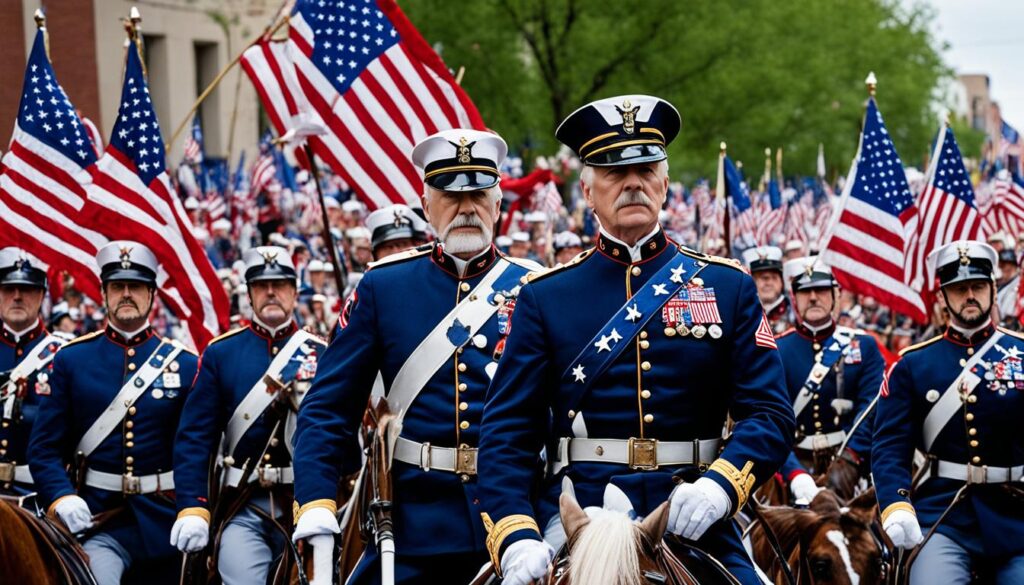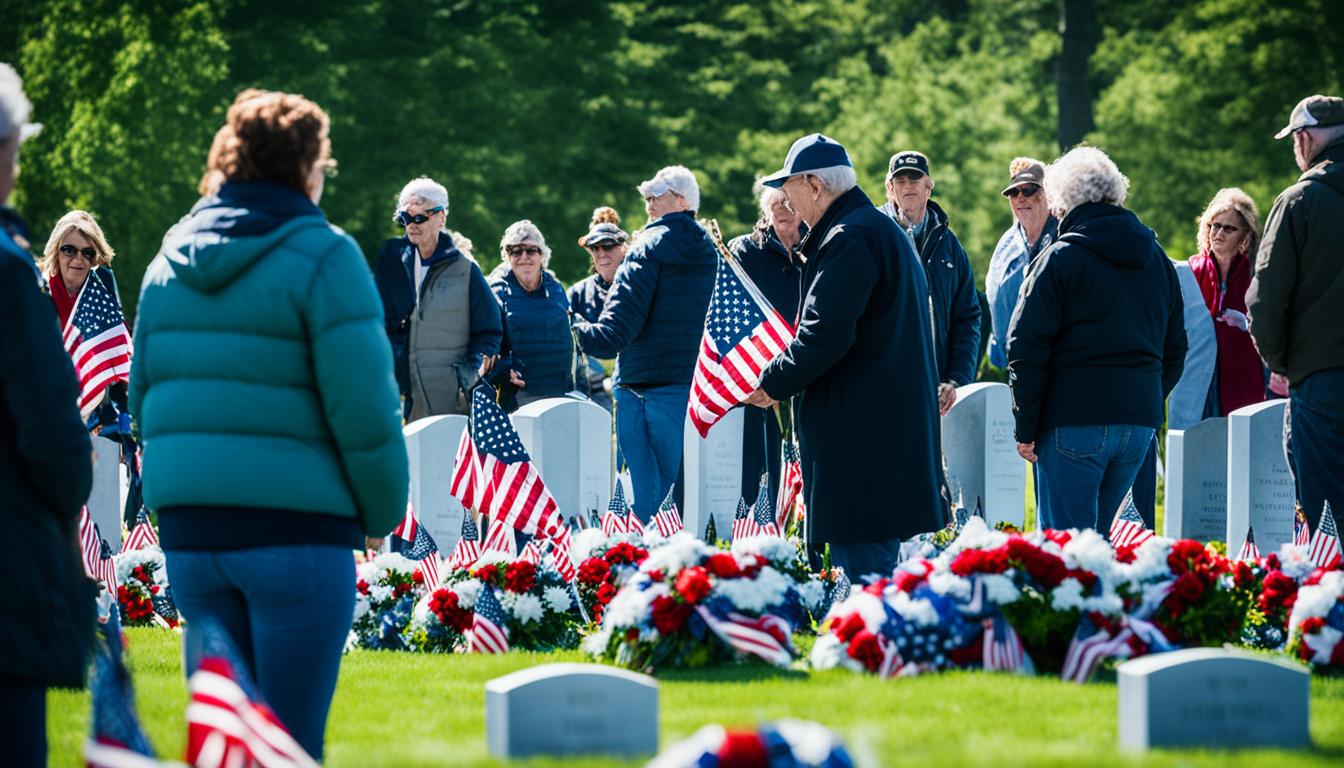Memorial Day honors fallen soldiers from the Civil War era. It began as Decoration Day, a tribute to those who died in America’s bloodiest conflict. The holiday started right after the Civil War to remember these brave souls.
Americans wanted to ensure the legacy of these heroes would live on. They sought ways to pay tribute to the war’s casualties. This day of remembrance became a federal holiday, now observed on the last Monday in May.
In the late 1860s, communities held springtime tributes for fallen Civil War soldiers. People visited cemeteries to decorate graves with flowers, flags, and wreaths. These actions gave rise to the name Decoration Day.
Early observances were scattered and locally organized. They showed a growing desire to honor those who died serving their country. Decoration Day slowly gained traction across the nation.
In 1868, General John A. Logan made a significant move. As commander-in-chief of the Grand Army of the Republic, he issued General Orders No. 11. This order officially established “Memorial Day” to remember and honor Civil War soldiers.
The name “Memorial Day” became more common after World War II. The federal government officially recognized it in 1967. Logan’s order marked a crucial step in the holiday’s evolution.
Key Takeaways
- Memorial Day was originally known as Decoration Day, established in the years following the Civil War to honor fallen soldiers
- Early observances involved decorating graves of war casualties with flowers, flags, and wreaths
- General John A. Logan and the Grand Army of the Republic formalized the holiday in 1868
- The name “Memorial Day” became more common after World War II
- Memorial Day was officially recognized as a federal holiday in 1967
Early Observances of Decoration Day
Before Decoration Day became official, communities across the U.S. held springtime tributes for Civil War dead. These early observances shaped the Decoration Day origins and traditions that later spread nationwide.
In April 1866, women in Columbus, Georgia, decorated graves of Confederate and Union soldiers. This act of Civil War remembrance showed a desire to heal war wounds and honor all fallen soldiers.
In Boalsburg, PA, three women decorated local soldiers’ graves in October 1864. Their actions inspired others to join, creating a foundation for future Decoration Day observances.
On May 1, 1865, freed African Americans in Charleston, SC, held a parade for deceased Union soldiers. This powerful display honored those who fought for freedom and equality.
These tributes in the North and South showed a widespread desire to remember Civil War losses. Observances in Columbus, GA, Boalsburg, PA, and Charleston, SC helped establish Decoration Day’s foundation.
General John A. Logan and the Grand Army of the Republic
General John A. Logan and the Grand Army of the Republic (GAR) played a key role in establishing Decoration Day. Logan led the GAR, an organization of Union veterans. He was crucial in promoting the holiday and ensuring its widespread recognition.
On May 5, 1868, Logan issued General Orders No. 11, proclaiming a nationwide day of remembrance. He set May 30 as the date, avoiding any specific Civil War battle anniversary. This allowed the focus to remain on honoring all fallen Union soldiers.

The GAR, under Logan’s guidance, worked hard to promote Decoration Day across the country. Their extensive network of local posts helped spread the observance rapidly. Communities came together to pay tribute to their fallen heroes.
Logan and the GAR’s efforts transformed Decoration Day from a local event to a national holiday. Their dedication to honoring Union veterans’ sacrifices established a lasting tradition. This tradition continues today as Memorial Day.
Decoration Day Origin and Spread
The first national Decoration Day observance happened on May 30, 1868, at Arlington National Cemetery. It honored fallen Civil War soldiers with speeches, prayers, and hymns. People decorated Union and Confederate graves with flowers, symbolizing unity.
General James Garfield, future 20th President, gave a moving speech. Decoration Day quickly gained popularity across the nation. By 1890, all Northern states recognized it as a holiday.
Southern states initially honored their fallen on different days. This changed after World War I when the holiday commemorated all American war casualties. Some historians point to the 1863 Gettysburg cemetery dedication as inspiration for Decoration Day.
This event honored fallen soldiers’ graves, setting a precedent. Decoration Day observances spread nationwide, becoming an annual tradition. It paid tribute to American service members’ sacrifices.
National Decoration Day in 1868 was crucial for post-Civil War healing. It united Americans from North and South to honor their heroes. This tradition evolved into today’s Memorial Day.
Memorial Day remembers all American military personnel who died serving their country. It continues the solemn tradition of honoring fallen heroes.
Evolution from Decoration Day to Memorial Day
Decoration Day changed over time, especially after World War I. It grew to honor all fallen American soldiers. This shift made the day a time to remember all military personnel who died for our country.
Congress passed the Uniform Monday Holiday Act in 1968. This law made Memorial Day a federal holiday on the last Monday in May. The change took effect in 1971 under the National Holiday Act of 1971.
It created a three-day weekend for federal employees. The holiday’s importance in American culture grew stronger as a result.
Some Southern states kept separate days to honor Confederate soldiers until after World War I. As new conflicts arose, Memorial Day focused on all American war casualties. This change showed growing national unity and respect for all fallen soldiers.

Leave a Reply